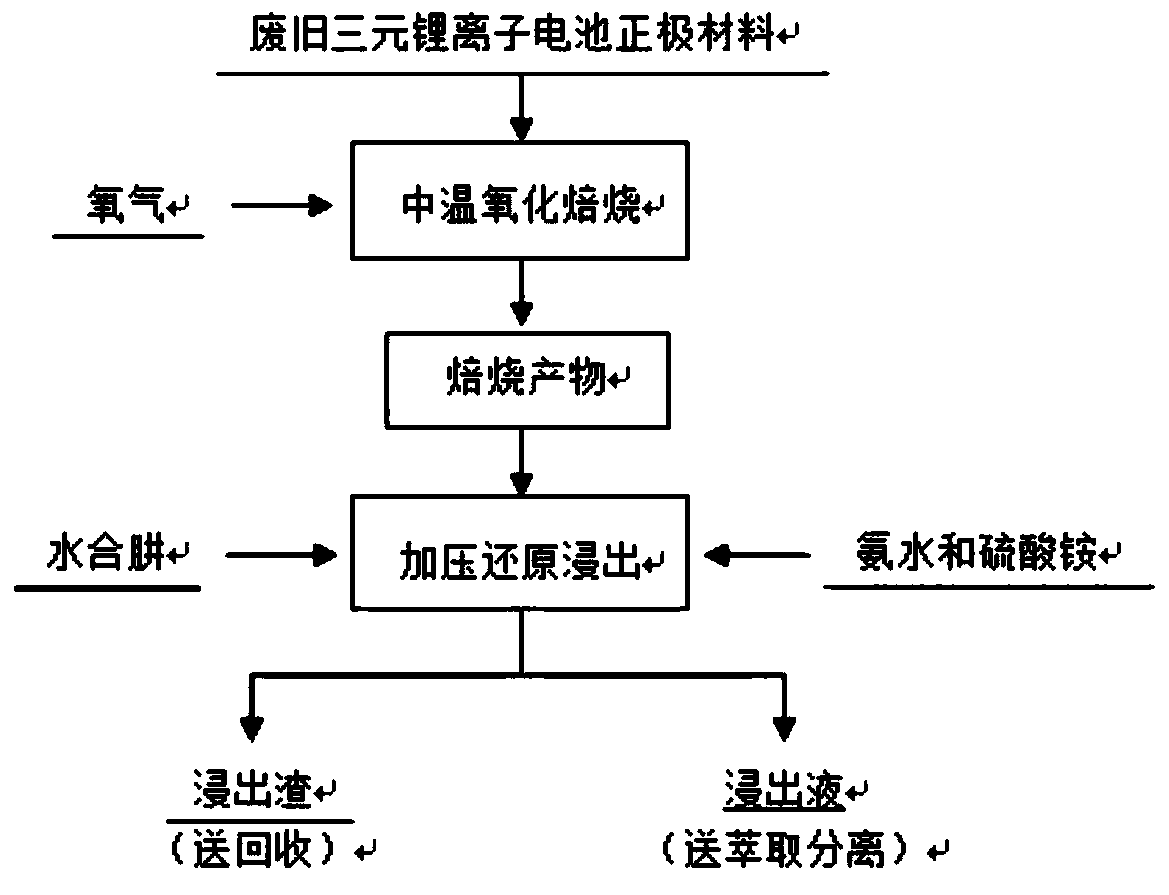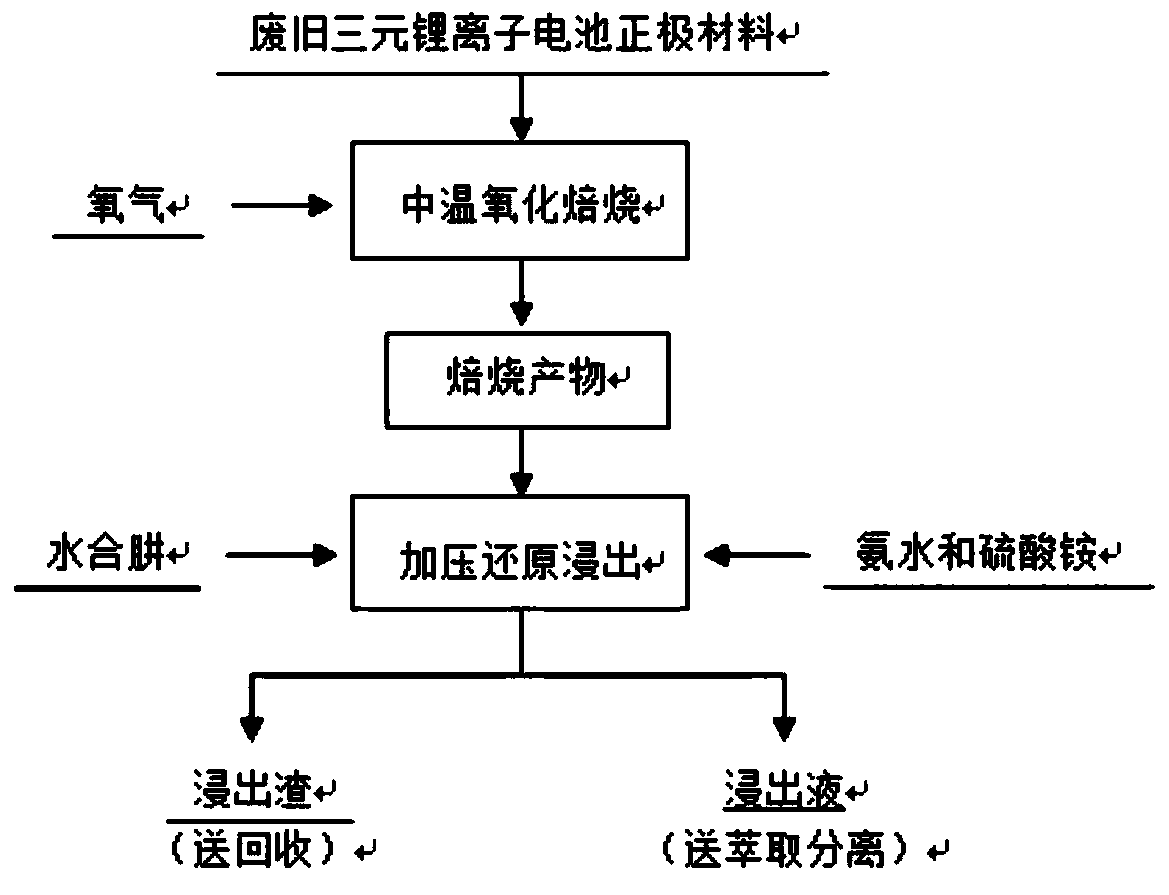Method for recovering valuable metals in waste ternary lithium ion battery cathode material
A lithium-ion battery and positive electrode material technology, applied in the field of metallurgy, can solve the problems of long leaching time and low leaching rate, and achieve the effects of low corrosion, increased leaching rate, and simple process flow
- Summary
- Abstract
- Description
- Claims
- Application Information
AI Technical Summary
Problems solved by technology
Method used
Image
Examples
Embodiment 1
[0018] Waste ternary lithium ion battery cathode material, its main components are (%): Li 5.20, Ni 28.83, Co11.40, Mn 14.67, Fe 0.13, Al 0.51, Cu 0.03, C 1.09; industrial grade oxygen, of which O 2 Content ≥ 99.5%; technical grade ammonium sulfate, of which (NH 4 ) 2 SO 4 Content ≥99%; industrial grade ammonia, of which NH 3 ·H 2 O content is 25-28%; industrial grade hydrazine hydrate, of which N 2 h 4 ·H 2 The O content is 80%.
[0019] Weigh 10.00 g of the waste ternary lithium-ion battery positive electrode material of the above-mentioned composition, add it to a quartz crucible, place the quartz crucible in a tube furnace, seal the tube furnace and start to feed oxygen, and control the flow rate of oxygen to be 300mL / min, after passing oxygen at room temperature for 10 minutes, the tube furnace began to heat up to 700°C, and after reacting for 60 minutes, it was cooled and lowered. The main components are recorded as (%) by weight percentage: Li 5.31, Ni 29.47, C...
Embodiment 2
[0022] Waste ternary lithium ion battery cathode material, its main components are (%): Li 5.31, Ni 28.84, Co11.35, Mn 14.68, Fe 0.13, Al 0.51, Cu 0.04, C 1.21; industrial grade oxygen, of which O 2 Content ≥ 99.5%; technical grade ammonium sulfate, of which (NH 4 ) 2 SO 4 Content ≥99%; industrial grade ammonia, of which NH 3 ·H 2 O content is 25-28%; industrial grade hydrazine hydrate, of which N 2 h 4 ·H 2 The O content is 80%.
[0023] Weigh 100.00 g of the waste ternary lithium-ion battery positive electrode material of the above-mentioned composition, add it to a quartz crucible, place the quartz crucible in a tube furnace, seal the tube furnace and start to feed oxygen, and control the flow rate of oxygen to be 200mL / min, after passing oxygen at room temperature for 25 minutes, the temperature of the tube furnace was raised to 750°C, and after 50 minutes of reaction, the temperature was cooled down. The main components are recorded as (%) by weight percentage: L...
PUM
 Login to View More
Login to View More Abstract
Description
Claims
Application Information
 Login to View More
Login to View More - R&D
- Intellectual Property
- Life Sciences
- Materials
- Tech Scout
- Unparalleled Data Quality
- Higher Quality Content
- 60% Fewer Hallucinations
Browse by: Latest US Patents, China's latest patents, Technical Efficacy Thesaurus, Application Domain, Technology Topic, Popular Technical Reports.
© 2025 PatSnap. All rights reserved.Legal|Privacy policy|Modern Slavery Act Transparency Statement|Sitemap|About US| Contact US: help@patsnap.com


